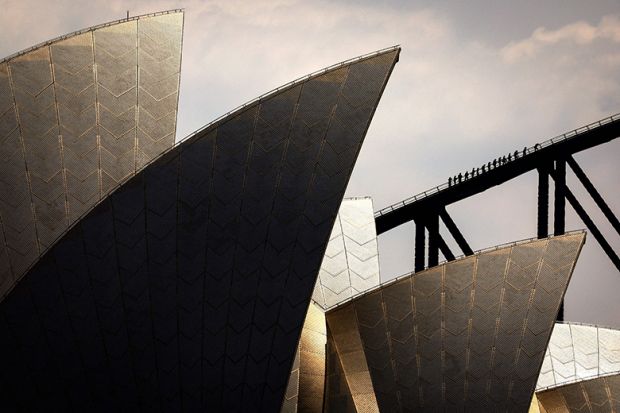The cost of educating Australian university students has risen by more than one-fifth in just four years, a Times Higher Education analysis has found.
Public universities’ expenses climbed 16 per cent between 2019 and 2023, even as student “load” – enrolments on a full-time equivalent basis – fell 5 per cent.
This increased the average cost of educating students by 22 per cent, from A$33,814 (£16,939) before the pandemic to A$41,126 in 2023.
Twenty-four of the 38 publicly funded universities were in deficit by the end of 2023, the latest year for which institutional accounts are available. Analyst Andrew Norton said administrators would have little choice but to “do what they’re already doing, which is trying to reduce their staff numbers”.
Norton, now professor of higher education policy at Monash University, said administrators would focus on job cuts that were “easier to do”, such as jettisoning workers whose contracts had concluded.
“You go for the least expensive, least conflictual method of reducing staff numbers, but that’s not necessarily the most strategic way of going about it,” he said. “[You risk] a misalignment between the staff you’ve got and the mission you want to be pursuing.”
Consultancy KordaMentha likewise found that the sector’s “cost to serve” had risen 22 per cent between 2018 and 2022. “Universities face immense pressures on both their revenue and their costs,” it noted in its inaugural annual report.
“Historically, universities have been able to manage their way through similar periods by increasing international student revenues. But that avenue may soon be closed.”
On the revenue side, the sector has experienced a decline in domestic demand since 2021, exacerbated by students dropping subjects to free up time for paid work, and a plunge in overseas enrolments during Covid. Student load was lower in 2023 than 2019 at more than two-thirds of public universities.
Meanwhile, outlays have been driven up by inflation. Staff costs rose 14 per cent between 2019 and 2023 and sundries such as security, travel, marketing, scholarships, maintenance and consumables increased 16 per cent, according to universities’ annual reports.
Mounting compliance obligations, new delivery models, extensive use of consultants, soaring executive pay packets and what Norton called a post-Covid “hiring spree” have also amplified universities’ expenses.
The balance sheets face more pressure from last year’s federal government crackdown on international enrolments and a spate of salary increases, after universities agreed to wage rises above the norm for other industries.
On the other side of the ledger, a long-anticipated demographic bubble in school leaver numbers could boost domestic enrolments, while receding inflation – which fell to a three-year low last year – could ease pressure on universities’ costs and allow cash-strapped students to pick up more subjects.
Norton said this was unlikely because years of soaring prices had increased the “underlying cost structure” for students. But he said an influx of school leavers could increase the average study load overall, because younger students tended to take more subjects than their older peers.
Norton predicted a continuing decline in enrolments in “niche” areas such as languages, where staff costs were relatively high and student numbers tended to be low, alongside business, economics, marketing, accounting, communications and media studies.
He said domestic load in these areas had started falling several years before the Job-ready Graduates reforms increased fees for most humanities subjects.




